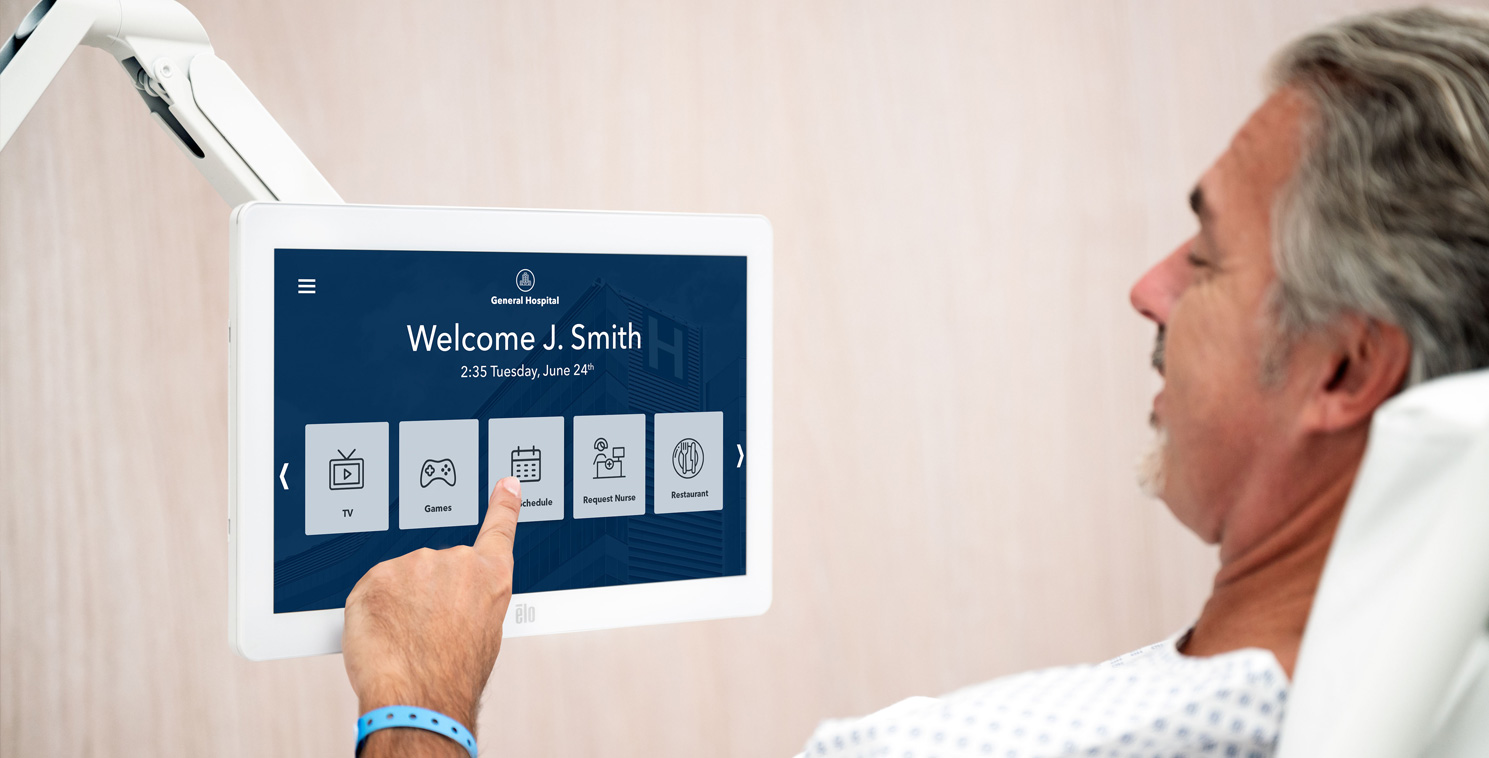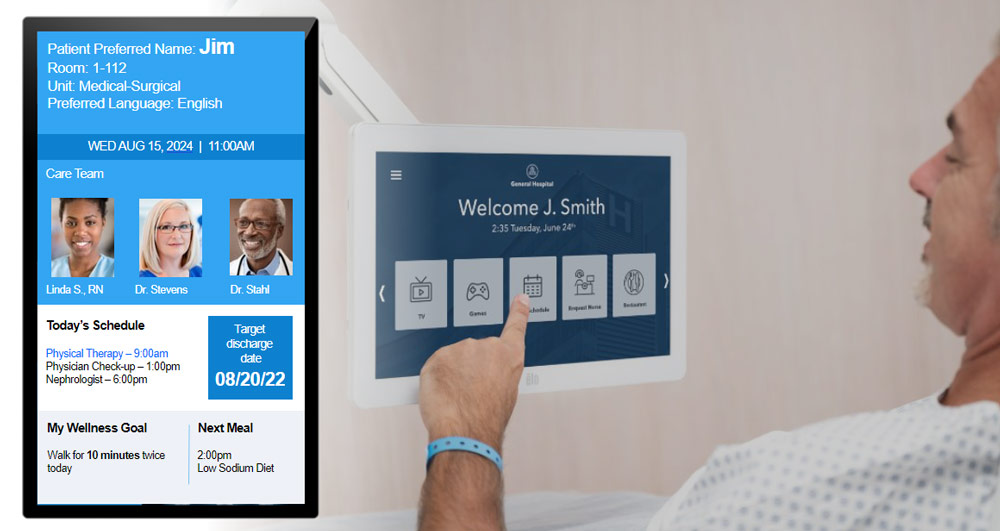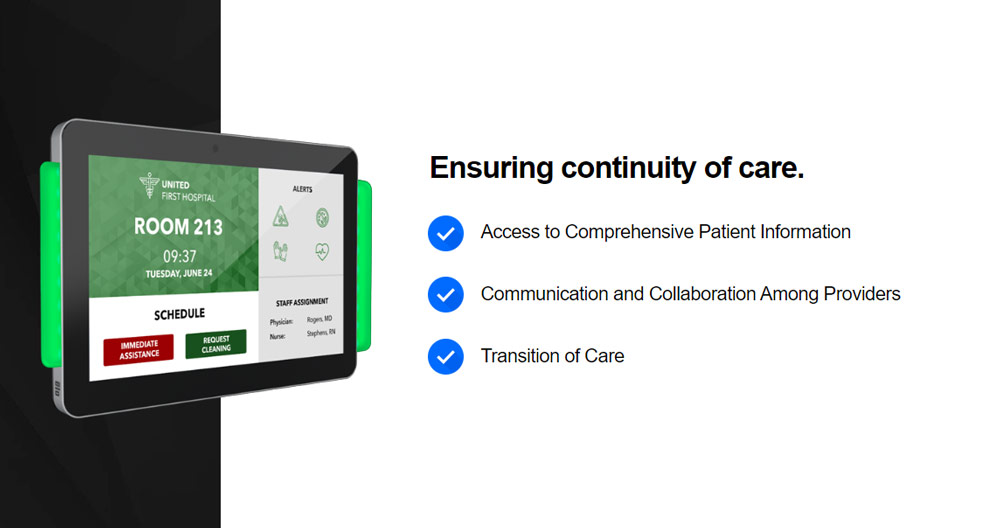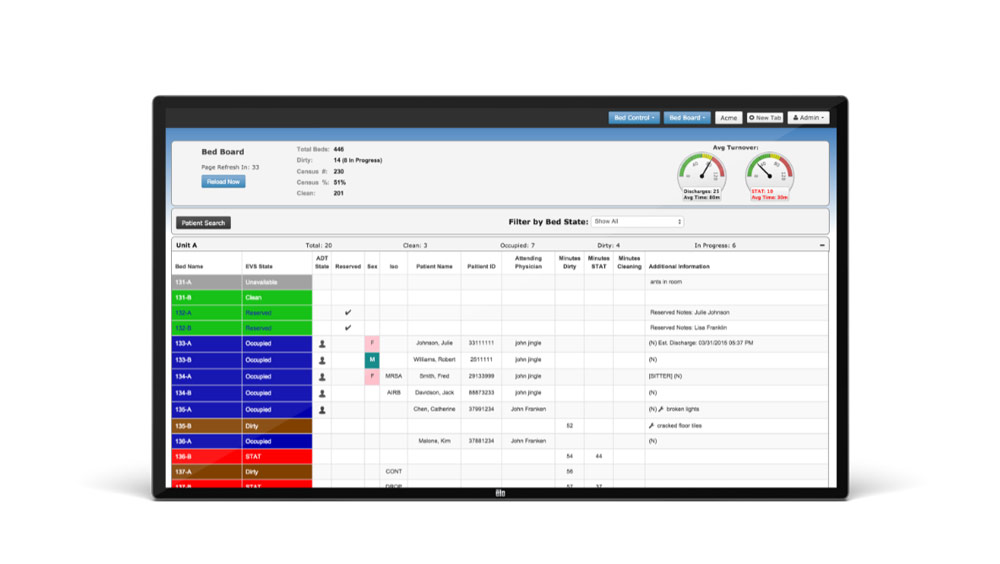October 3, 2024
The Digital Revolution in Healthcare: Enhancing Patient Care Through Interactive DisplaysThe Digital Revolution in Healthcare: Enhancing Patient Care Through Interactive Displays

In the rapidly evolving landscape of healthcare, technological innovations are reshaping the patient experience and transforming the way medical services are delivered. Among these innovations, digital displays have emerged as a powerful tool for connecting patients and physicians, enhancing patient care, improving outcomes, and ensuring better continuity of care.
Elo, recognized as a prominent expert in interactive technology, was invited to share insights on the transformative potential of interactive displays in healthcare at the Bluestar Healthcare Leadership Summit. As part of the panel discussion, Katharine Cummings, RN BSN MBA, Director of Healthcare Business Development at Elo, provided valuable expertise on how interactive displays can elevate patient care standards.
Titled The Digital Bridge: Exploring the Role of Interactive Displays to Enhance Patient Care,
the presentation delved into the pivotal role of interactive technology within modern healthcare environments. Below, we highlight key takeaways from the session, shedding light on the profound impact of these displays on healthcare delivery and patient outcomes.
Interactive displays offer collaborative features such as patient education videos, real-time health data visualization, and personalized health information. By providing patients with access to relevant and engaging content, these displays empower individuals to become active participants in their care journey.
Bridging Communication Gaps
Communication between patients and clinicians has long been a challenge in healthcare. Interactive displays serve as a bridge, enabling seamless communication through features like secure messaging platforms and telehealth capabilities. This improved communication fosters stronger patient-provider relationships and enhances the overall care experience.

Personalizing Patient Care
Personalization is key to improving patient outcomes, and interactive displays excel in delivering tailored content to individual patients. Whether it's medication reminders, lifestyle recommendations and educational content, or preventive care information, personalized displays empower patients to make informed decisions about their health based on their unique needs and preferences.

Ensuring Continuity of Care
Continuity of care is essential for providing comprehensive and effective healthcare services. Digital displays facilitate the seamless exchange of information among healthcare providers, ensuring that patient data is accessible and up-to-date across various care settings. This continuity ultimately leads to better coordination of care and improved patient outcomes.

-
Overcoming Challenges
Implementing interactive displays in healthcare requires navigating various challenges, including privacy concerns, technological barriers, and resistance to change. Decision-makers within hospitals, such as administrators, department heads, and IT leaders, play a crucial role in evaluating and adopting new technologies. Additionally, vendors looking to introduce new technology into healthcare settings should prioritize engaging and building relationships with clinical leaders and frontline staff who will ultimately use the technology on a daily basis. Lastly, we must understand organizational priorities and challenges beyond financial constraints.
Improving access to data
Improving access to data is crucial for optimizing patient care and enhancing hospital efficiency. Clinicians can use longitudinal tracking of health outcomes including treatment responses and readmission rates for chronically ill patients to help identify trends and make informed decisions which can ultimately lead to better outcomes. Additionally, data visualization can help facilities understand the average turnover rate for hospital beds and operating rooms, the latter being an important source of revenue. This data can assist facilities manage resources, minimize wait times, and increase throughput. Ultimately, leveraging a data-driven approach can help hospital administrators make strategic decisions that enhance patient satisfaction and ensure future profitability by optimizing services.

Impact of Low Healthcare (HCAHPS) Scores Low healthcare scores, whether related to patient satisfaction, clinical outcomes, or efficiency metrics, can underscore the need for innovative solutions such as digital displays. In today's healthcare landscape, patient satisfaction and quality of care are paramount, and hospitals are continuously seeking ways to improve their performance and meet evolving patient expectations. It is important to note also that hospital reimbursement can be adversely affected by low HCAHPS.
The adoption of digital displays can be a strategic investment in improving overall healthcare scores and fostering a culture of continuous improvement. Furthermore, implementing interactive displays can contribute to a more patient-centered care approach, which has been linked to higher patient satisfaction and improved health outcomes. When we prioritize technology that can positively impact key performance indicators and elevate healthcare scores, we positively impact reimbursement.
In conclusion, digital displays are revolutionizing the healthcare industry by enhancing patient care, improving outcomes, and ensuring better continuity of care. By leveraging the power of technology, we can create a more patient-centered healthcare that promotes improved patient experience and care outcomes and increases reimbursement. The future of healthcare is digital, and the possibilities are limitless.